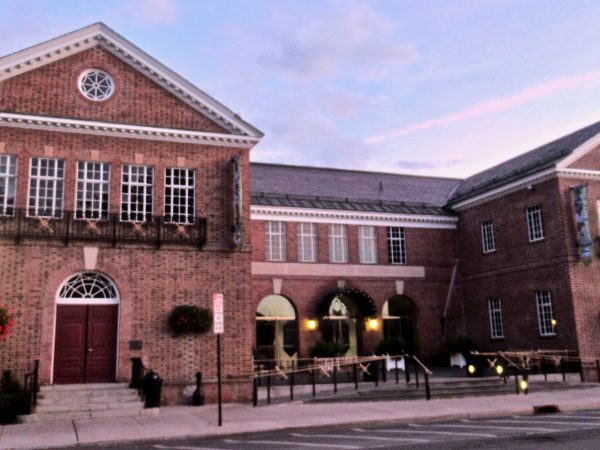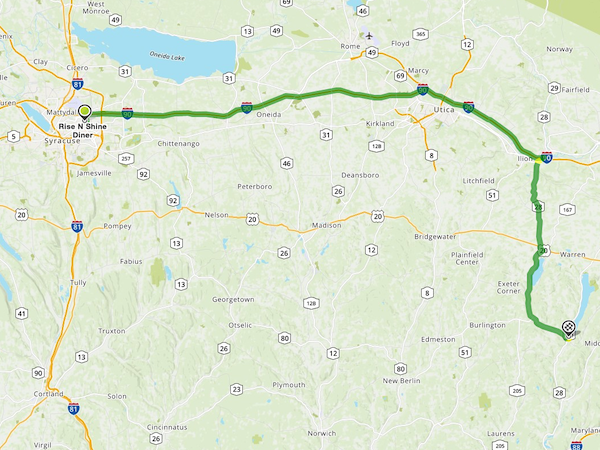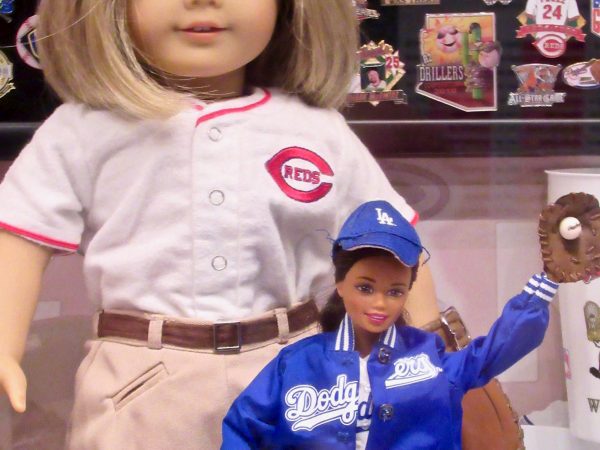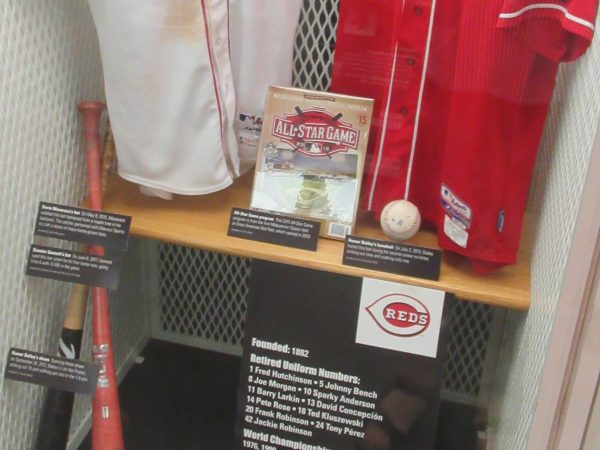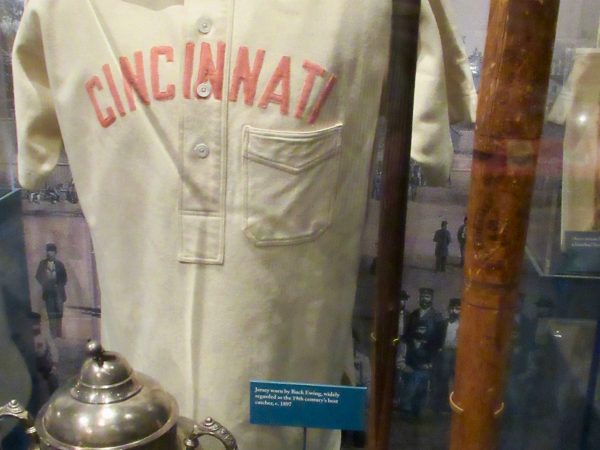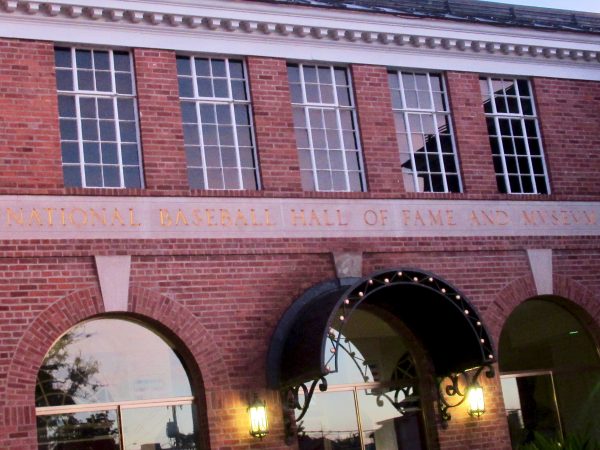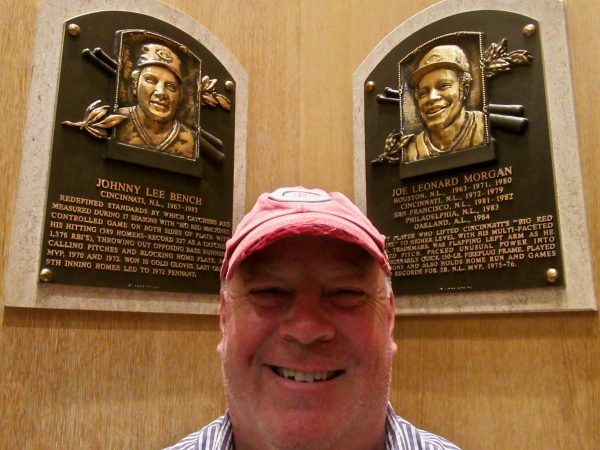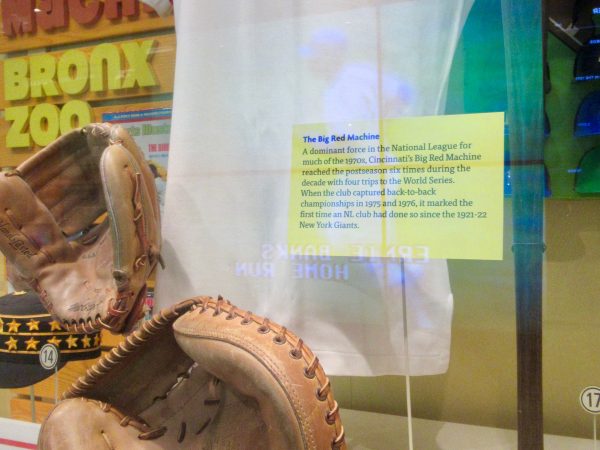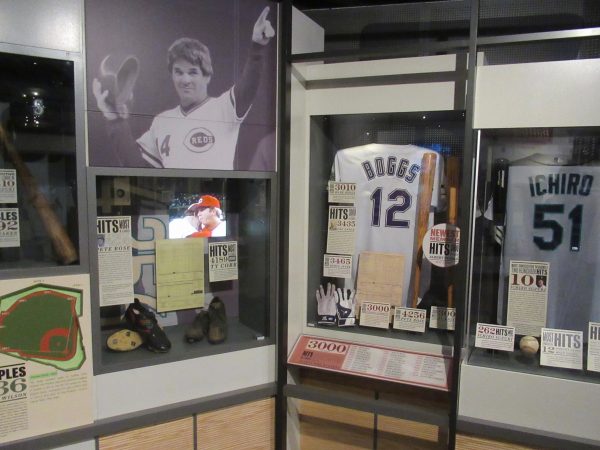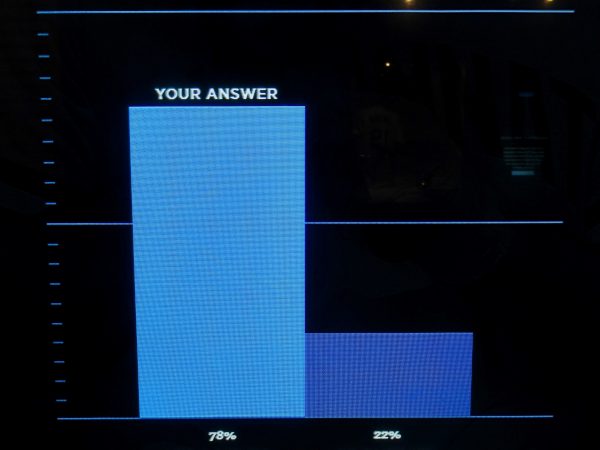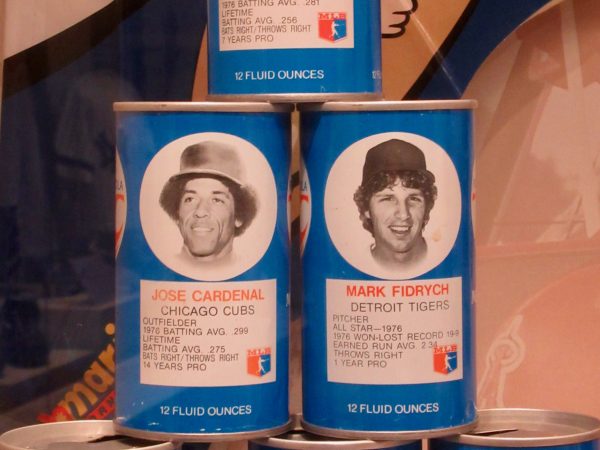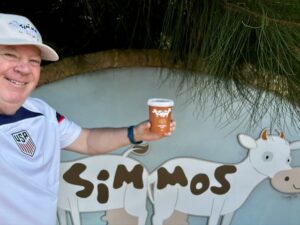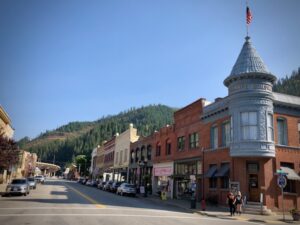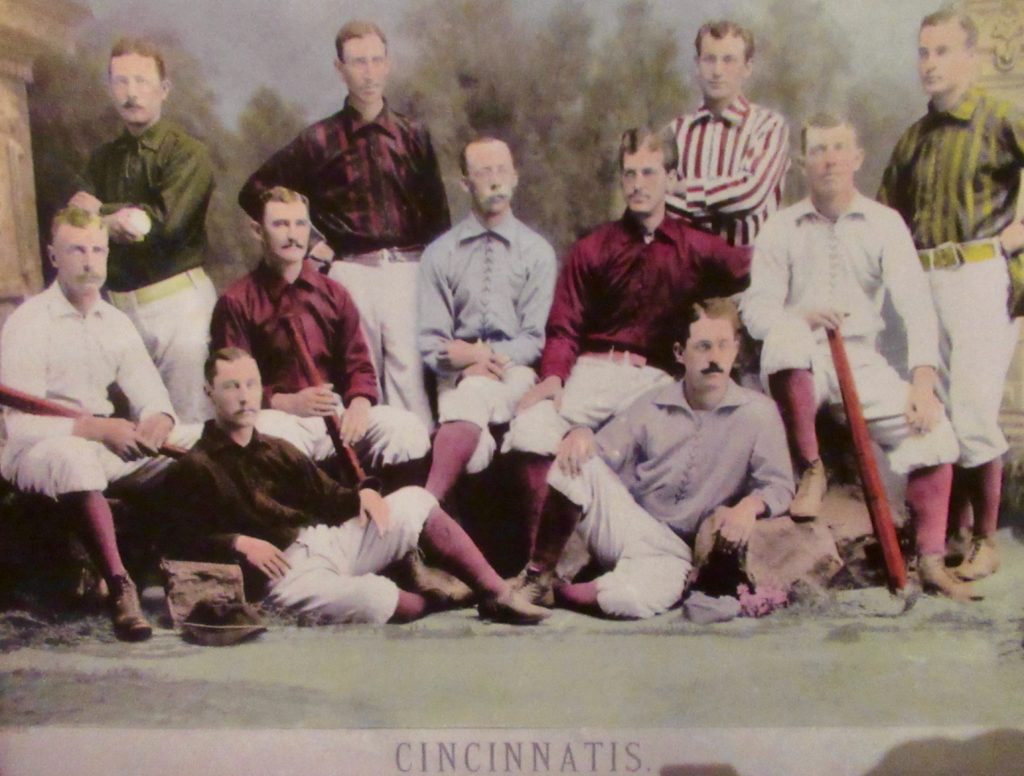
Day 4: Syracuse, New York, to Cooperstown, New York
Distance: 165 miles
On the radio: “Something Stupid” by Frank Sinatra and Nancy Sinatra (1967)
Highlights: If Dyersville, Iowa, is the home of an imaginary baseball “Field of Dreams,” then Cooperstown, New York, must be the place where players’ dreams really do come true. That’s because this tiny hamlet of 1,800 is home to the National Baseball Hall of Fame and Museum.
There is literally something for everyone, fans and players alike. And it is much more than a room full of plaques. The museum collection features artifacts from all 30 Major League Baseball teams. It’s relevant. This is what was most amazing to me.
So much effort has been made to keep the museum exhibits up to date. Any time anything significant happens in baseball, some little artifact gets sent to Cooperstown. For my hometown Cincinnati Reds, there was the bat that Scooter Gennett used in 2017 to hit four home runs in a single game. Nearby were the shoes and ball from pitcher Homer Bailey’s no-hitters of 2012 and 2013, respectively. These were recent events of the past few years – things that I actually remember or, with a little prodding, can recall.
Staff here is so diligent that even the old stuff gets refreshed, occasionally to my dismay. For example, the Cincinnati Red Stockings have always been known as the very first professional baseball team. It’s a year engrained in every Cincinnatian: 1869.
Now I am told by Casey, one of the museum’s archivists, that they have revised the exhibit placards to read “one of a handful of teams” (not “the first”) to “openly pay” – not just “pay” – its players. Apparently, there were several other teams of that era who were paying players “under the table,” as it were, in secret. The Reds were only the first to do it out in the open. Sigh.
This revision may not have been as earth shattering as, say, those posed by the NY Times’ “1619 Project,” but it was sad to me nevertheless. I mean, MLB and ESPN Sunday Night Baseball already stole Cincinnati’s tradition of throwing the pitch that kicks off the baseball season. What’s next? That Skyline Chili, Montgomery Inn Ribs and Graeter’s Ice Cream isn’t good for me? But I digress.
Make no mistake. I loved my visit to this museum. I learned that in the olden days, you were not allowed to overrun first base; that a pitcher’s hand was not allowed to go above the waist during a delivery (sidearm was legalized in 1883, then overhand in 1884); and, that a Cincinnati Reds player named Bid McPhee continued to play second base bare-handed well into the mid 1890s, even though gloves had been introduced a decade earlier!
In actuality, I came to Cooperstown with two questions: 1) How did the Chicago White Stockings (ultimately the Chicago Cubs) so quickly become more popular than the Cincinnati Reds in 1871? 2) How did the museum treat my boyhood hero, Peter Edward Rose, since he currently is banned for life from the Hall of Fame for betting on baseball?
The answer to the first question, I discovered, was rather unremarkable. The Cincinnati team had disbanded after the 1870 season, as team owners found it too difficult to turn a profit now that they were paying all their players.
As for Pete, or “the Hit King,” as he refers to himself, I was ecstatic to see that he is very, very well represented – in the museum portion only. There are at least three major displays where he is not only included but showcased: As part of the Big Red Machine; statistically, with his all-time best records; and, finally, scandalously, with the controversy over his banishment.
Many will be happy to learn that within the results of the interactive voting terminals, 78 percent of the respondents said Pete should be in the Hall of Fame. Another 78 percent said that PEDs (performance enhancing drugs) are worse than gambling.
Or do you think only people from Cincinnati voted in his favor? I know I did. Maybe even twice.
Tips if your visit:
1) Go in the summer: There are extended hours from the day before Memorial Day through the day before Labor Day, from 9 am to 9 pm (instead of 9 am to 5 pm). I went from 6 pm to 9 pm on a Tuesday in June and nearly had the entire place to myself. If you love crowds, go at midday. Or during the annual induction ceremony.
2) Start at the top: Watch the inspirational film and then start at the third floor and work your way down, from modern times, through baseball origins and statistics. The final stop, on the first floor, is the actual Baseball Hall of Fame, where all the plaques are displayed. I spent a leisurely three hours among the three floors. I could easily have spent another three to six on the top two. There’s simply so much to read and so many statistics to digest, if you are into that sort of thing.
3) Visit the archives: If you love baseball history, as I do, visit the Giamatti Research Center, which is open Monday thru Friday, 9 am to 5 pm. It’s like a little library. Call or email ahead and they will pull out requested material in advance. Photo copies are FREE! And you don’t need to pay museum admission to access the archives. I spent more time here than in the museum!
Places to stay:
I stayed at the Overlook Bed & Breakfast, run by Jack and Gayle Smith. It’s not the most expensive or cheapest place to stay, but is convenient to all things (as are most accommodations in this small town). The Inn at Cooperstown looked really nice. The Otesaga Resort Hotel is the large, historic option for conventioneers.
Places to eat:
I had a really nice meal for dinner at Mel’s at 22. A good, traditional American breakfast or lunch can be had at the Doubleday Café. Ice cream and souvenir / memorabilia shops are everywhere on Main Street.
Top secret!
There is a really nice fire pit bar behind the Otesaga Resort Hotel where you can have a night cap outside by the lake. It’s a great way to end the day.

